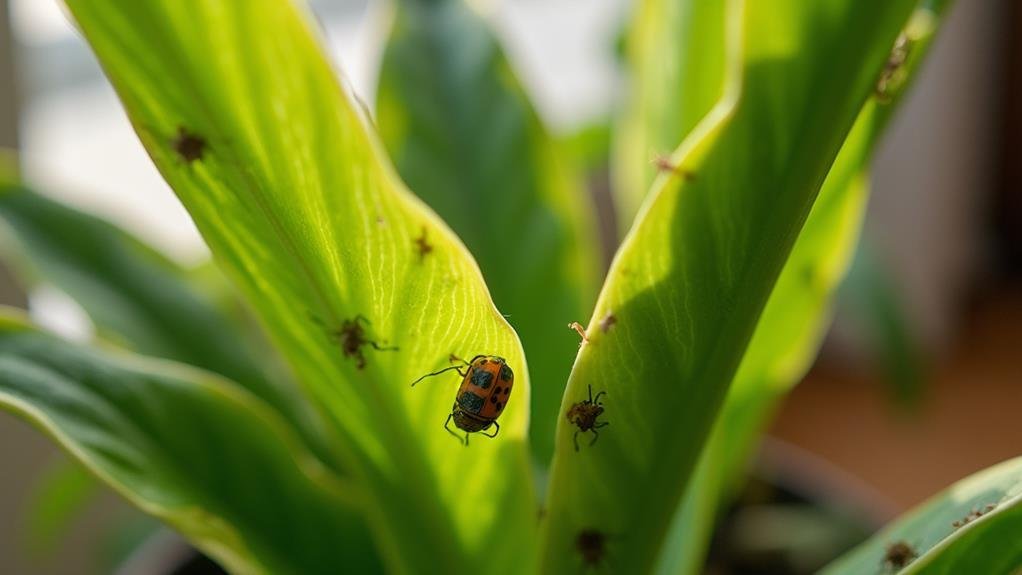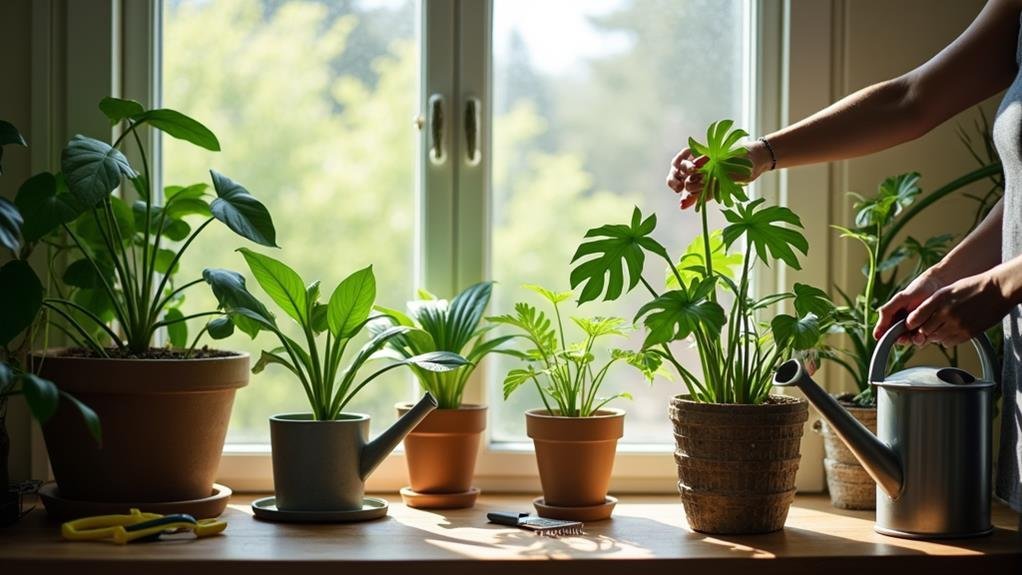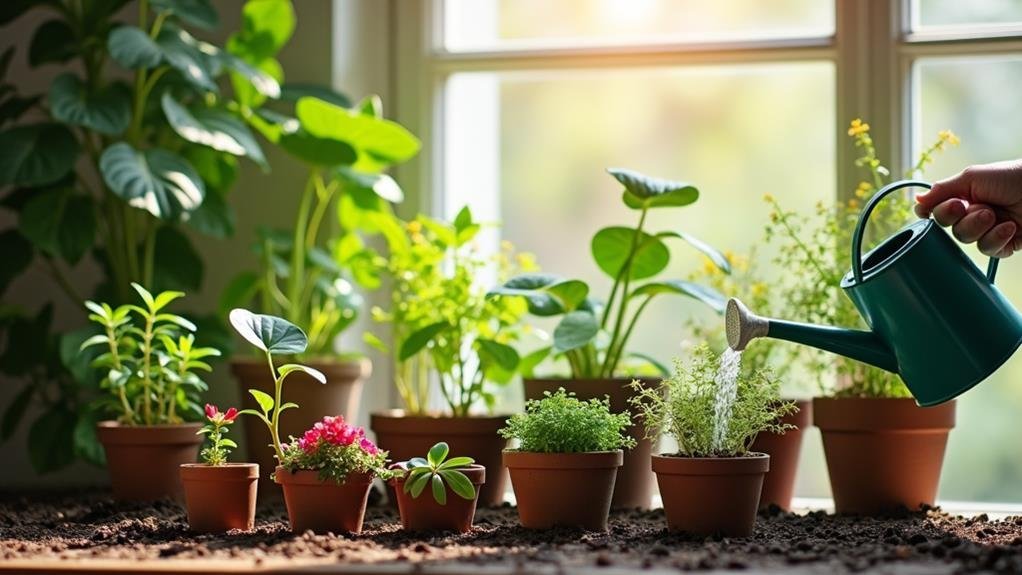If you're looking to brighten up your space without the hassle of constant maintenance, low light indoor plants might be just what you need. These resilient plants thrive in dim conditions, allowing you to improve your home's atmosphere effortlessly. They also offer benefits like air purification and stress reduction, making them a smart choice for any room. But before you rush out to choose your favorites, it's essential to evaluate a few key factors that can impact your plant selection and care. What could those be?
Benefits of Low Light Plants

Regarding enhancing your indoor space, the appeal of low light plants lies in their remarkable adaptability. These plants thrive in environments with minimal sunlight, making them perfect for those cozy corners or dimly lit rooms where other plants might struggle.
You don't need to be a plant expert to care for them; their resilience means you can enjoy greenery without the stress of constant attention.
Low light plants also contribute to improved air quality. They naturally filter toxins from the air, which can create a healthier living environment for you and your loved ones.
Plus, having greenery indoors has been shown to reduce stress and increase overall well-being. Just being around plants can boost your mood and create a more inviting atmosphere.
Additionally, they require less frequent watering compared to their sun-loving counterparts. This convenience means you can maintain a lush indoor garden without dedicating too much time to upkeep.
With such benefits, low light plants are an excellent choice for anyone looking to bring a touch of nature indoors, even in less-than-ideal lighting conditions.
Top Low Light Indoor Plants
Regarding selecting low light indoor plants, several options stand out for their beauty and hardiness.
The Snake Plant, with its tall, sword-like leaves, is a popular choice. It's virtually indestructible and thrives on neglect, making it perfect for busy individuals.
Another great option is the ZZ Plant, known for its glossy, dark green leaves that reflect light beautifully. It adapts well to low light and requires minimal watering.
If you're looking for something a bit more vibrant, consider the Pothos. This trailing plant adds a splash of color with its heart-shaped leaves and can easily grow in dim areas.
For a touch of elegance, the Peace Lily offers stunning white blooms that can brighten up any room, all while flourishing in low light conditions.
Lastly, the Spider Plant isn't only easy to care for but also produces charming "baby" plants that can be propagated.
Each of these plants brings unique qualities to your space, ensuring you have options that suit your style while thriving in lower light conditions.
Care Tips for Low Light Plants
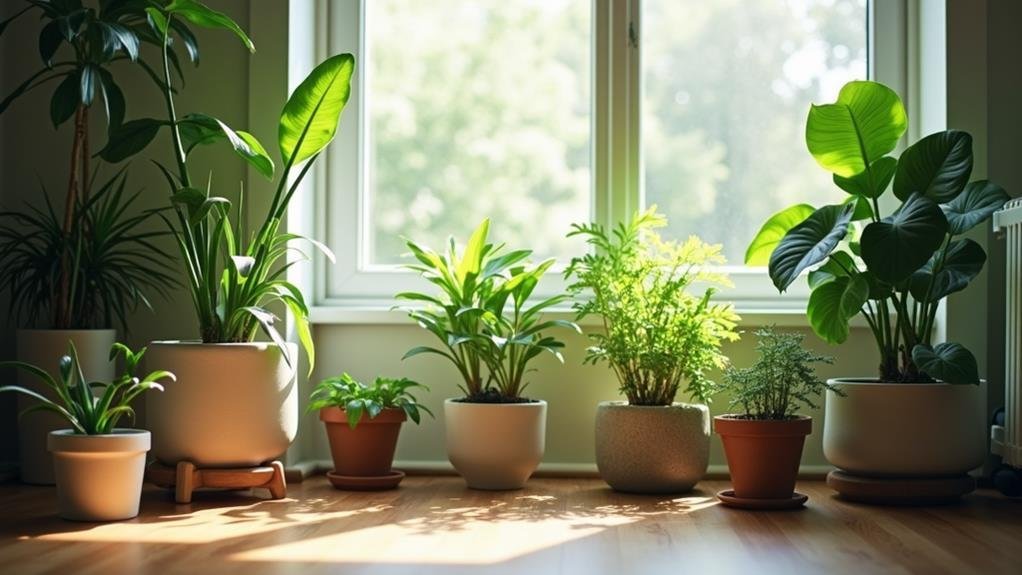
Caring for low light plants involves understanding their unique needs to guarantee they thrive in less-than-ideal conditions.
First, choose the right location. Place your plants where they'll receive indirect sunlight, like near a north-facing window or in a well-lit room. Remember, low light doesn't mean no light!
Watering is essential. Overwatering is a common mistake, so check the soil before adding water. Stick your finger an inch deep; if it's dry, it's time to hydrate. When you do water, give it a good soak until it drains from the bottom.
Temperature is another factor. Most low light plants prefer temperatures between 60°F and 75°F, so avoid placing them near drafts or heat sources.
Fertilizing is minimal for these plants. During the growing season, you can feed them with a diluted liquid fertilizer every couple of months.
Lastly, dust can accumulate on leaves, blocking light. Wipe leaves gently with a damp cloth every few weeks to keep them clean and happy.
Common Mistakes to Avoid
When nurturing low light plants, avoiding common mistakes is key to their success. One of the biggest blunders is overwatering. It's easy to think that plants need more water in low light, but this can lead to root rot. Always check the soil moisture before watering; it should be dry to the touch.
Another common mistake is placing your plants in complete darkness. While they thrive in low light, they still need some indirect sunlight to grow. A few hours of filtered light can make a significant difference.
Don't forget to dust your plants' leaves, either. A buildup of dust can block sunlight and impede photosynthesis. Gently wipe the leaves with a damp cloth regularly.
Fertilizing too much is another trap many fall into. Low light plants typically need less fertilizer than their sun-loving counterparts, so stick to a light feeding schedule.
Enhancing Indoor Aesthetics
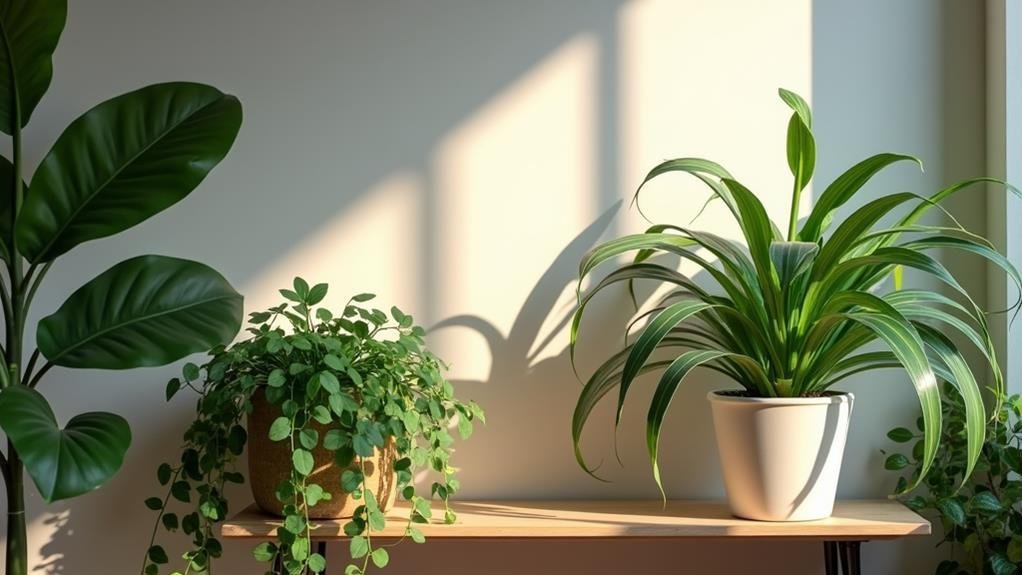
Low light indoor plants not only thrive in dim environments but also enrich your home's aesthetics beautifully. Adding greenery to your space instantly creates a sense of warmth and vibrancy. You'll find that different textures and shades of green can complement your existing decor, making your home feel more inviting.
Consider using low light plants like snake plants, pothos, or peace lilies; their unique shapes and sizes can add dimension to any room. Placing them in stylish pots or hanging baskets can improve the overall look of your interior. You can even mix and match various plants to create an eye-catching display that reflects your personal style.
Moreover, these plants can serve as natural air purifiers, refining not just the look but also the feel of your indoor environment. Imagine walking into a room filled with lush greenery—it's like a mini escape to nature without leaving your home!
Best Placement for Low Light Plants
Finding the right placement for low light plants can greatly improve their growth and your space's aesthetic. First, consider areas away from direct sunlight, like corners or rooms with north-facing windows. Low light plants thrive in indirect light, so placing them near a light source, but not directly in it, is ideal.
Next, think about humidity and temperature. Many low light plants, like snake plants or pothos, prefer stable conditions. Avoid placing them near drafts or heating vents, as sudden temperature changes can stress them out.
Instead, opt for spots like bathrooms or kitchens where humidity levels are higher.
You can also raise your plants for added visual interest. Use shelves, plant stands, or hanging baskets to create layers in your space. This not only showcases your plants but also helps improve air circulation.
Conclusion
Choosing low light indoor plants not only brightens your space but also improves your well-being. With their air-purifying qualities and minimal care requirements, they're perfect for anyone looking to add a touch of greenery to dim areas. By selecting the right plants and placing them wisely, you can create a calming atmosphere that elevates your home. So go ahead, welcome the beauty of low light plants, and enjoy a healthier, more inviting indoor environment.


